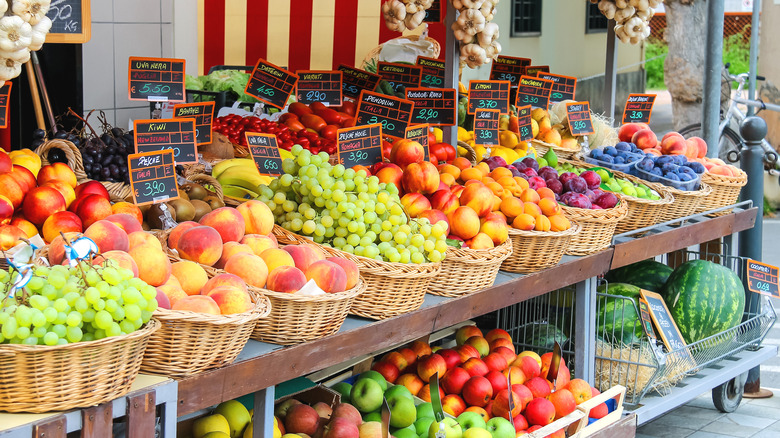The $1-Per-Pound Rule To Help You Decide What Groceries Are Worth It
It is no surprise that grocery prices have been skyrocketing recently. Many Americans have been suffering from price increases due to inflation, and grocery bills tend to be a major pain point.
In February, grocery prices were up 10.2% compared to last year, according to the U.S. Bureau of Labor Statistics. On top of the total increase, some individual items have spiked: eggs are up 138%, butter sticks are up 38.5%, flour is up 34.5%, and spaghetti and macaroni noodles are up 31.3%, according to the U.S. Bureau of Labor Statistics, via Time. Unfortunately, some experts suggest that expensive groceries may be here to stay, due to the higher price floor caused by inflation.
In order to navigate these steep prices and save some money, many people are looking for places to cut back on their food spending, from reducing meat consumption to eating more leftovers. We recommend trying out the $1-per-pound rule.
What is the $1-per-pound rule?
The $1-per-pound rule was made famous by Jeff Yeager, savings expert and author of "How to Retire the Cheapskate Way," "Don't Throw That Away!" and "The Cheapskate Next Door." The rule involves only buying food that costs $1 or less per pound and can apply to most foods, including produce, meat, grains, and dairy. You may have to sacrifice some of your usual items, but applying the rule can make a big difference in your overall grocery bill.
You can maintain a healthy diet while following the rule, according to Yeager, who says he tries to follow the rule year-round. "Many of the things we should be eating the most — whole grains, fruits, vegetables, legumes, and poultry — cost the least amount per pound," Yeager writes, via AARP. He continues, "The things that are bad for our health, at least in large quantities, cost the most per-pound (red meat, fatty dairy products, and fine cheeses)."
Some items that typically cost $1 or less per pound include bananas, onions, carrots, potatoes, oatmeal, rice, and canned beans. If the prices for these items still feel steep where you live, consider buying store brand items, or think about shopping at grocery chains known for their lower prices, such as Lidl and Aldi, or stores that offer bulk discounts, such as Costco and Sam's Club.
Other ways to save on your grocery bill
The $1-per-pound rule is one of many strategies consumers can use to cut back on how much they pay for groceries each month. Another helpful method is keeping track of the items you already have in your pantry, freezer, and fridge to avoid overbuying duplicates. After shopping what you already have, put those items to use by building a meal plan around what you already have and purchasing only what you need to complete the meal. For example, if you have frozen ground beef, a jar of salsa, and a can of black beans on hand, you only need to buy tortillas, cheese, and sour cream for a complete taco meal.
Shoppers may also have success checking sales, clipping couples, shopping the clearance section at the grocery store, signing up for store loyalty cards, meal prepping, cutting back on organic ingredients, and skipping prepared foods. With a little thought and some preparation, you can put these tips to practice and ease the bite of inflation.


